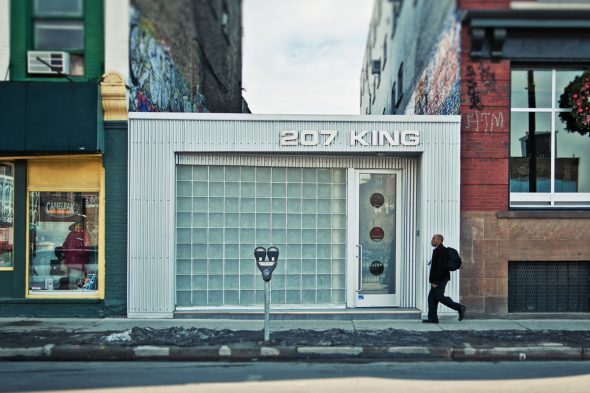Study examines how gentrifiers’ race affects retail development

UIC sociologist Mahesh Somashekhar studied the ways in which gentrifiers’ racial composition is associated with local retail development. Photo: Scott Webb on Unsplash.
How is the racial composition of gentrifiers associated with retail development in gentrifying neighborhoods?
According to a study by University of Illinois at Chicago sociologist Mahesh Somashekhar, neighborhoods gentrified by blacks experienced significantly slower retail development compared with neighborhoods gentrified by whites.
“Retail is critical to neighborhood identity and vitality. The places where people shop, eat and pass their time are the building blocks of a strong local community,” said Somashekhar, UIC assistant professor of sociology and the study’s author. “When retail development disproportionately occurs in neighborhoods that are becoming whiter, the benefits of local retail for community development go to whites over other racial groups.”
Using U.S. Census data and ReferenceUSA business directory listings in over 500 U.S. cities from 2000 and 2010, he found that white and black gentrifiers often moved into different sets of neighborhoods, and that gentrification did not always involve an influx of wealthy whites into non-white communities.
Areas gentrified by whites differed little from neighborhoods that did not gentrify in terms of overall retail growth. Yet the growth of “gentrification-oriented” retailers, such as art galleries, bars, upscale restaurants and coffee shops, was found to be consistently faster in neighborhoods gentrified by whites.
In comparison, both overall and “gentrification-oriented” retail development in neighborhoods gentrified by blacks was similar to and, in some cases, slower than retail development in neighborhoods that did not gentrify.
Factors involved in slower development may include retailers avoiding expanding into black neighborhoods, the limits of middle-class black wealth, or the preference of black gentrifiers to support existing retailers. Somashekhar recommends that lawmakers use tax incentives and other related policies to promote commercial development in black neighborhoods.
“Retail development due to black-led gentrification is unlikely to dramatically transform the conditions faced by blighted urban black communities,” he said.
Altogether, the issues underscore America’s imbalanced retail development and the role of race in urban development, Somashekhar said.
“The unequal access to retail that separates white and black neighborhoods is part of a larger pattern of racial inequality that defines urban development in many U.S. cities,” he said. “From schools to houses to commercial corridors, race affects how resources are distributed across local communities, and contemporary trends such as gentrification may be intensifying the problem.”
The study, “Racial Inequality between Gentrifiers: How the Race of Gentrifiers Affects Retail Development in Gentrifying Neighborhoods,” is forthcoming in the journal City and Community.
“This paper represents perhaps the first ever large-scale assessment of the ways in which gentrifiers’ racial composition is associated with local retail development,” he said. “This study also provides a counterweight to a growing body of literature that analyzes gentrification through the lens of housing policy and housing attainment.”
